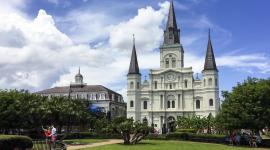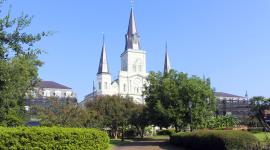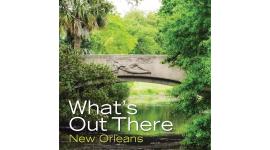Following the success and consequent overcrowding of Cypress Grove Cemetery, the Firemen’s Charitable & Benevolent Association created Greenwood in 1852 as a second resting place dedicated to the New Orleans’ volunteer firefighters. The growing demand for burial spaces resulting from the yellow fever outbreak of 1853 made the speedy development of the cemetery a greater priority than adorning it with elaborate architectural or landscape features. At 150 acres, Greenwood is one of the largest cemeteries in the city. It is bounded by Interstate 10 to the west, a rail-line to the north, and is adjacent to Metairie Cemetery, Cypress Grove Cemetery, Odd Fellows Rest, and St. Patrick’s Cemetery. Wide, paved rectilinear walkways divide the cemetery into dozens of large blocks. Within each block, tombs are compactly arranged back-to-back in long strips, with uniform swathes of lawn running between them, creating long, narrow views across the grid-like cemetery. Greenwood was the first cemetery with above-ground tombs to be constructed without perimeter walls, and the sparsely planted palm, crepe myrtle, and oak trees that line its perimeter frame views in and out. Several grand memorial structures occupy a section of otherwise empty, grassy lots that front onto City Park Avenue to the south. They include a monument to the city’s volunteer firemen, an iconic bronze elk standing atop a grassy tumulus of the Benevolent and Protective Order of Elks, and a large Confederate memorial. In 1982, a grand mausoleum with 14,000 burial spaces was added in the northeastern sector of the cemetery, along Canal Boulevard.


New Orleans,
LA
United States
Greenwood Cemetery - LA
Location and Nearby Landscapes
Related Content
- Image















